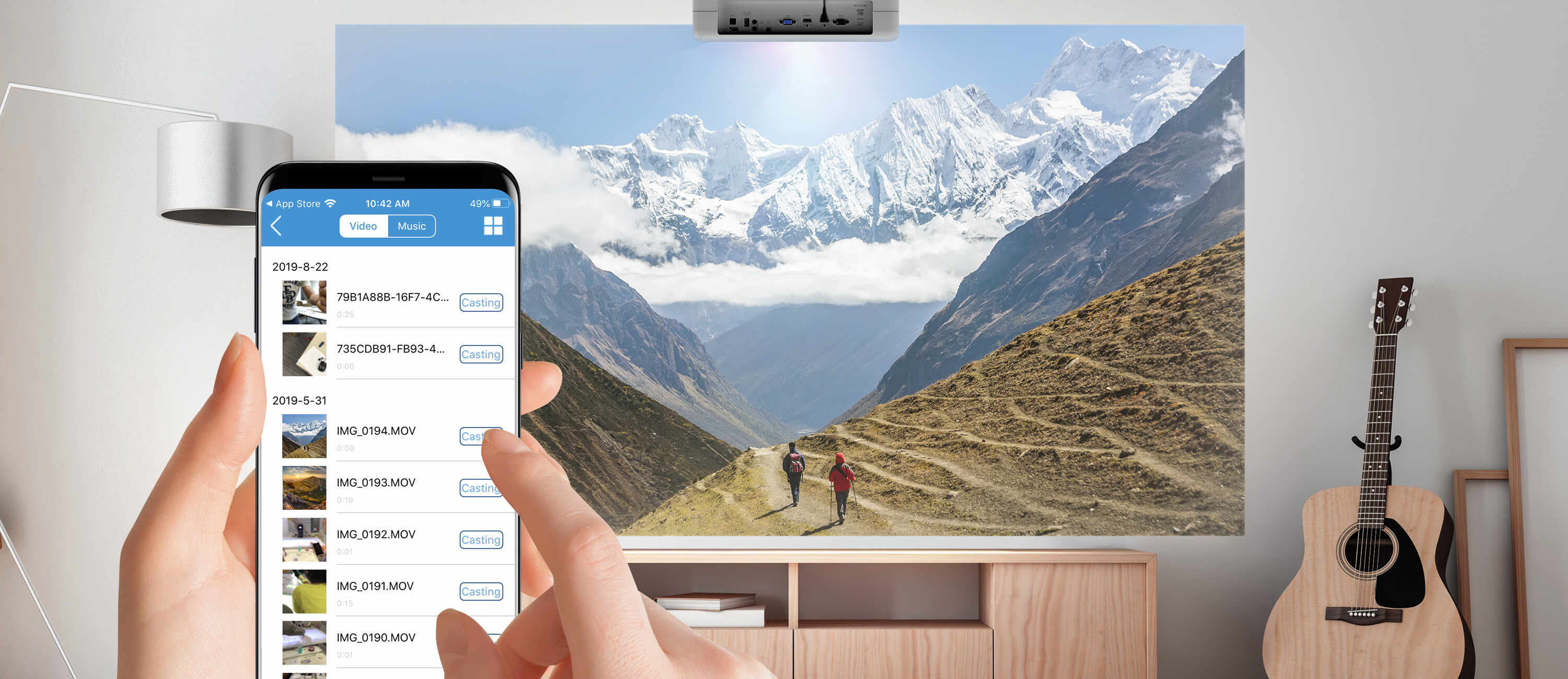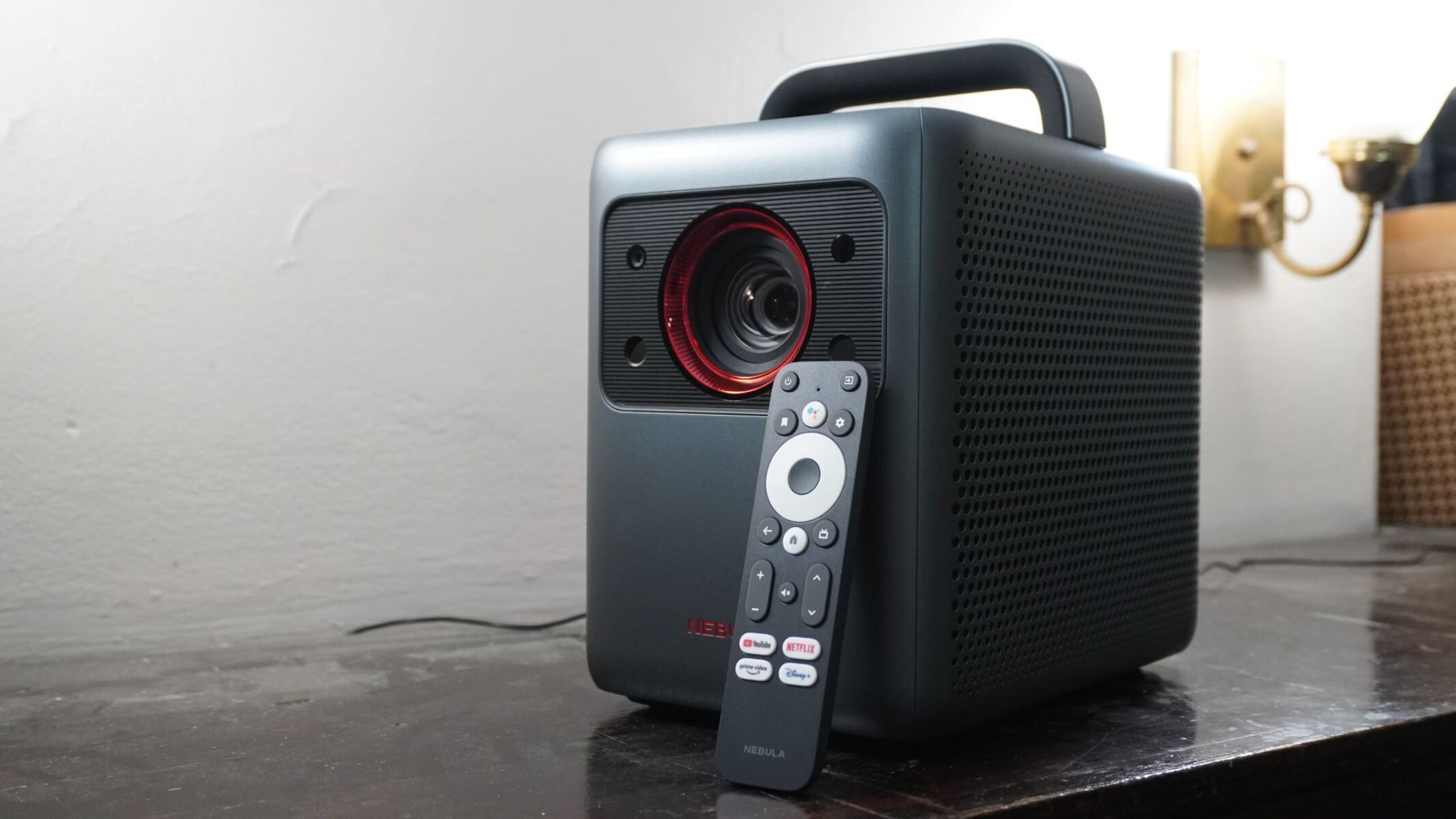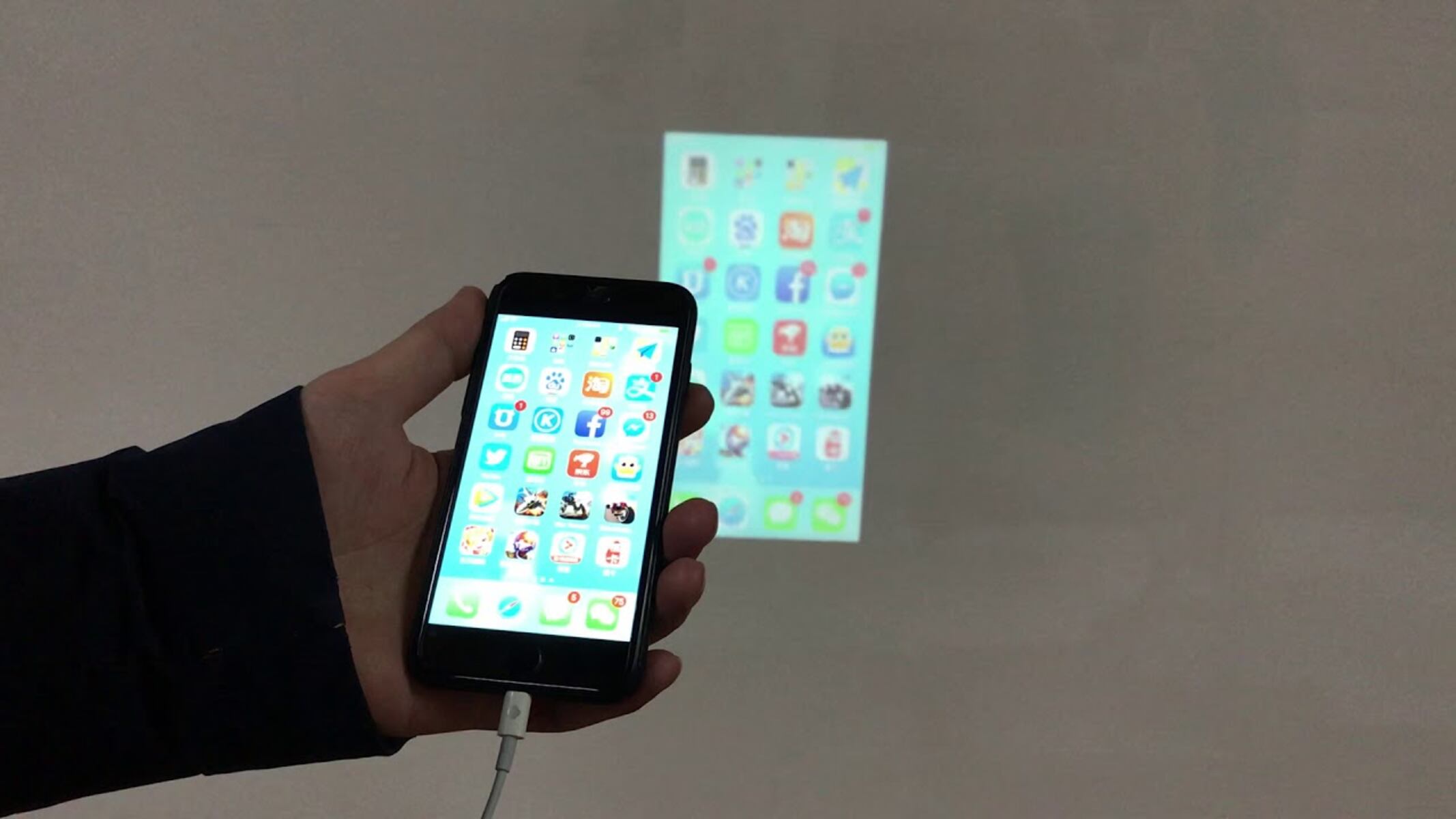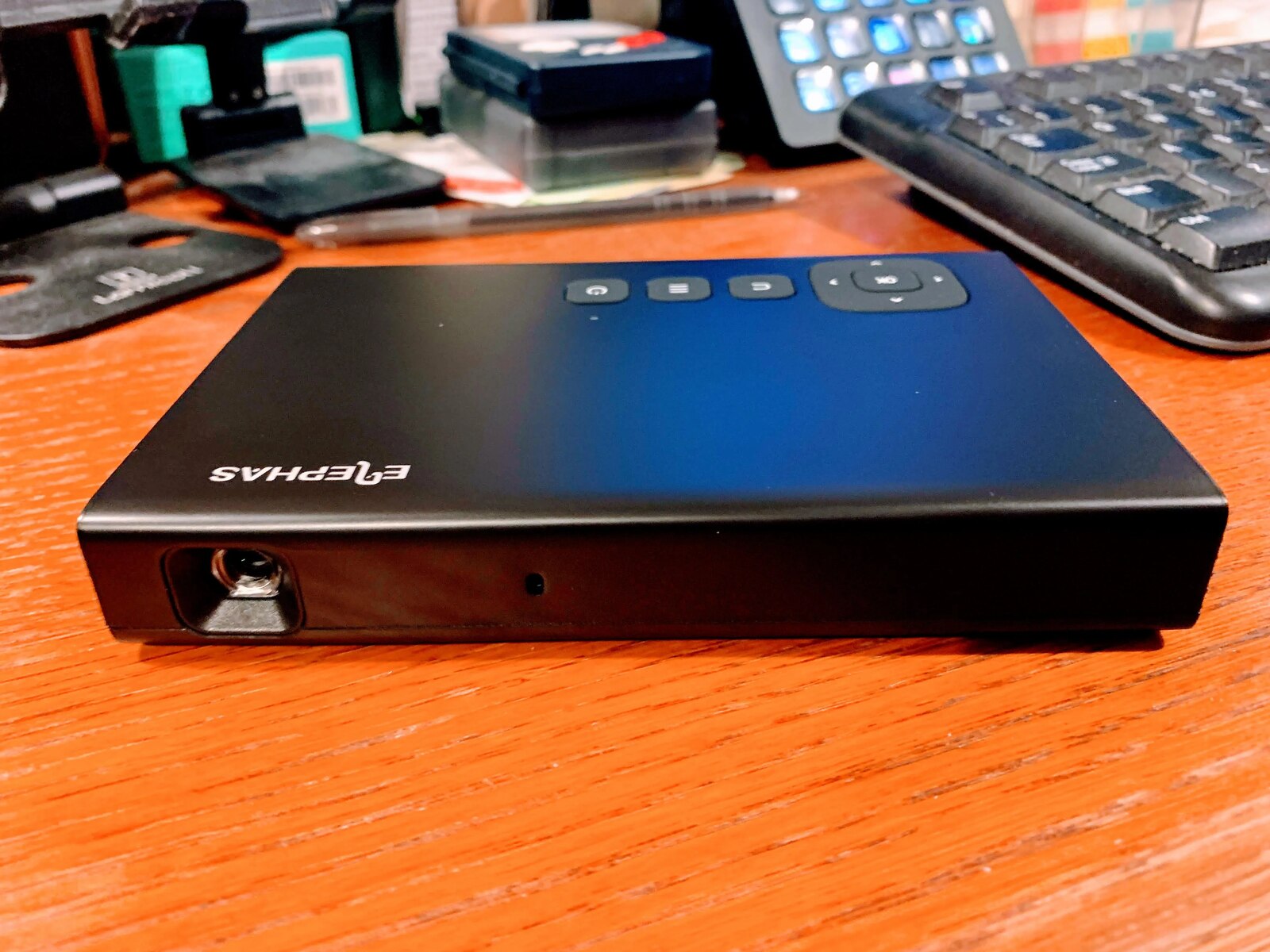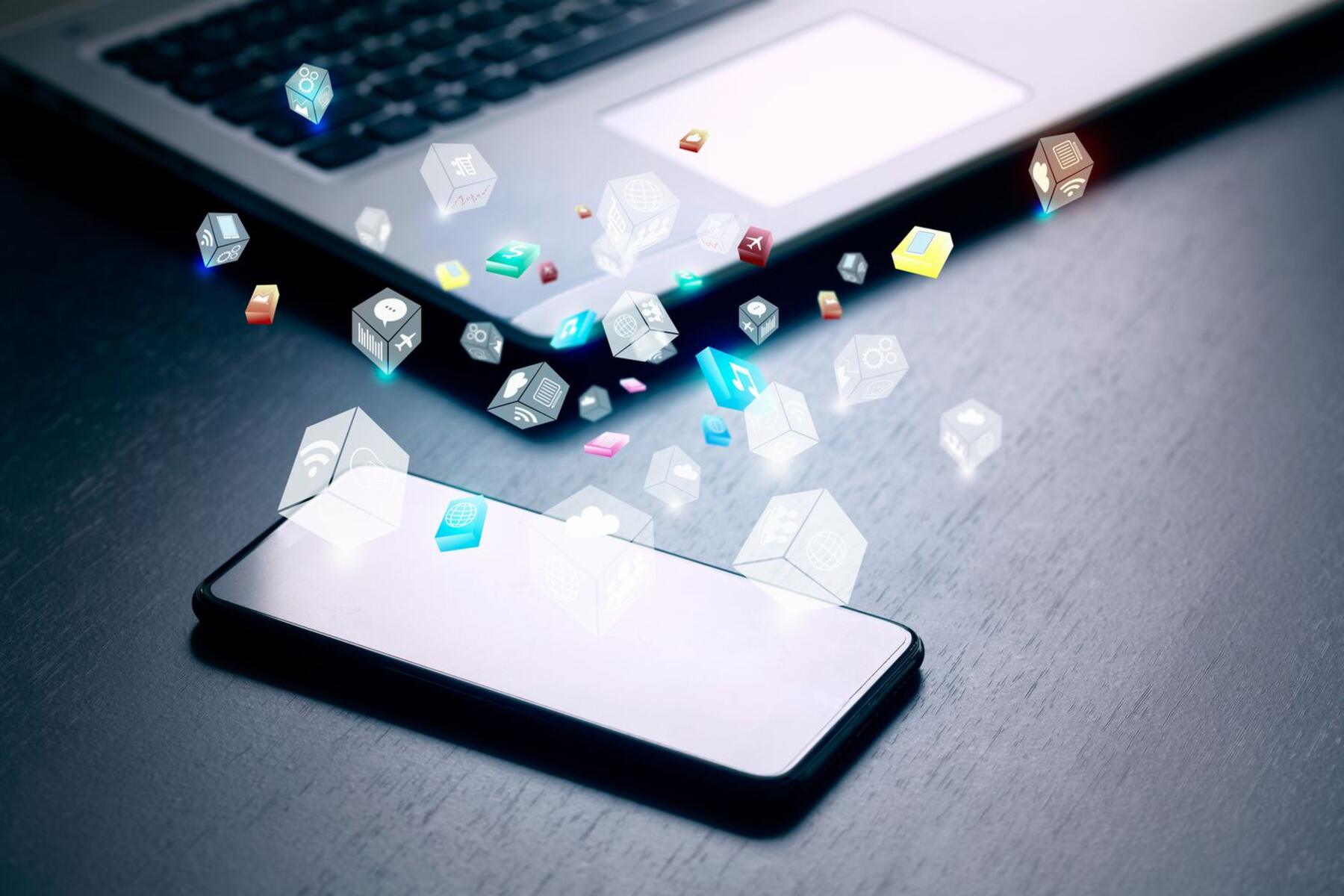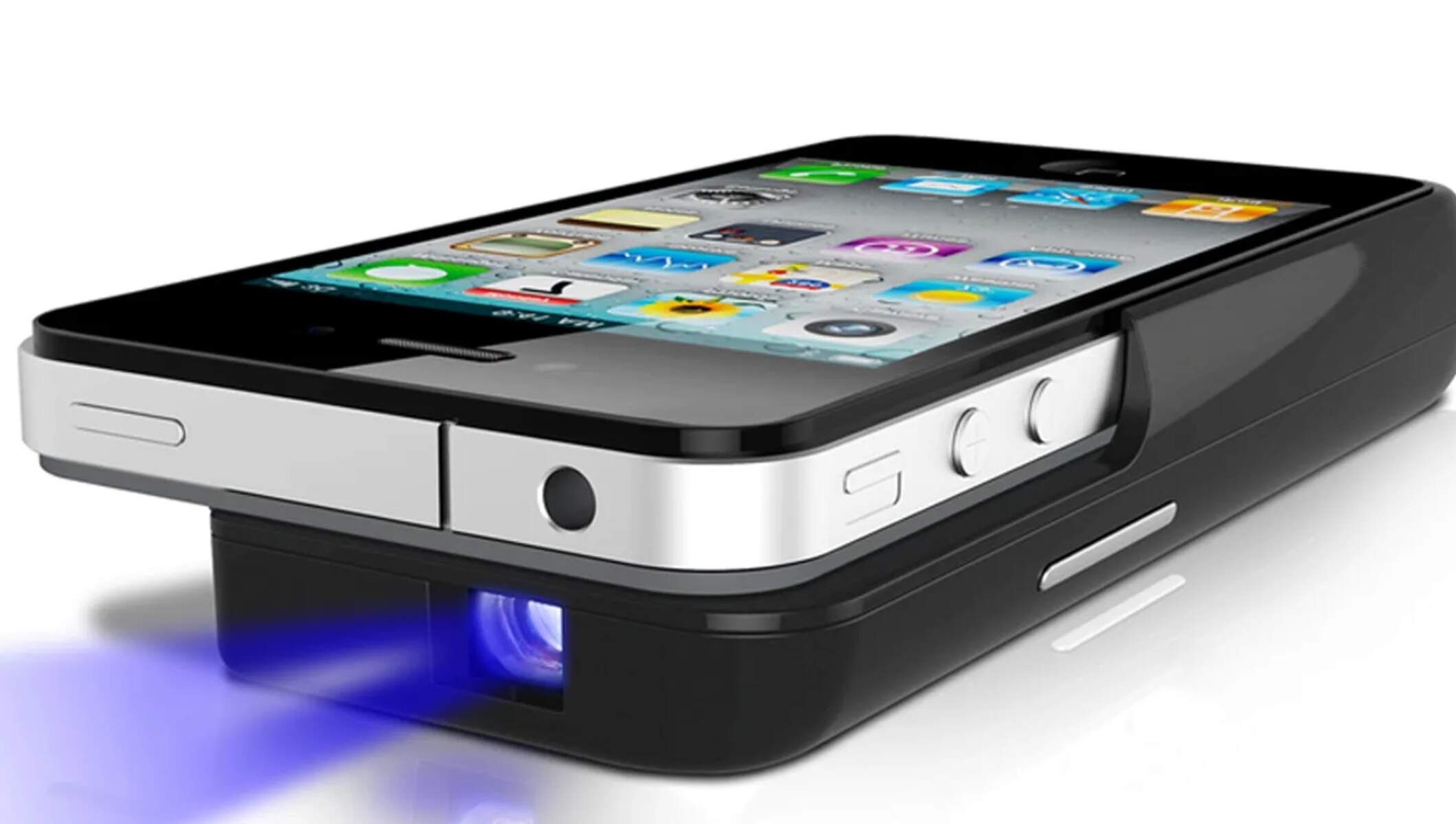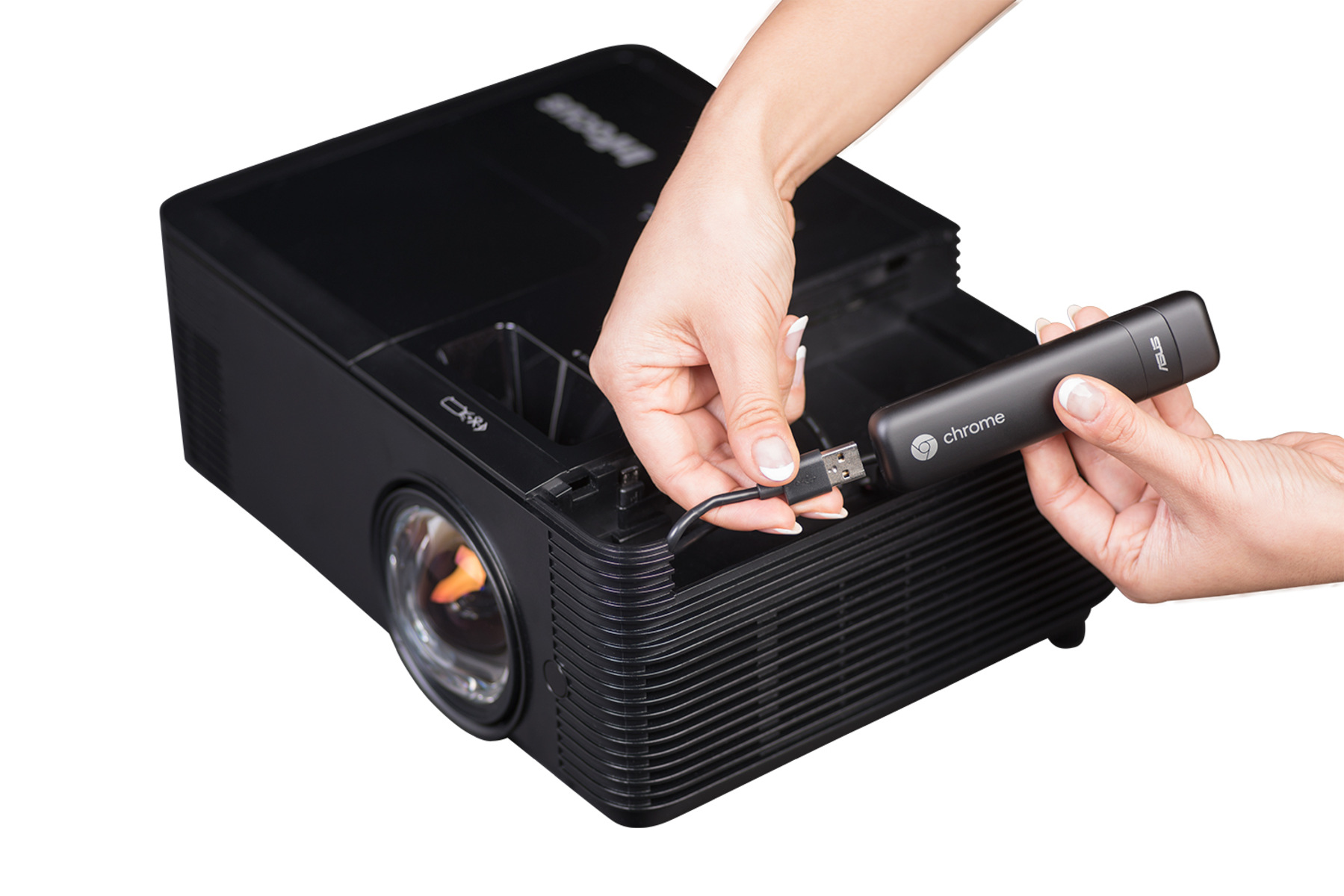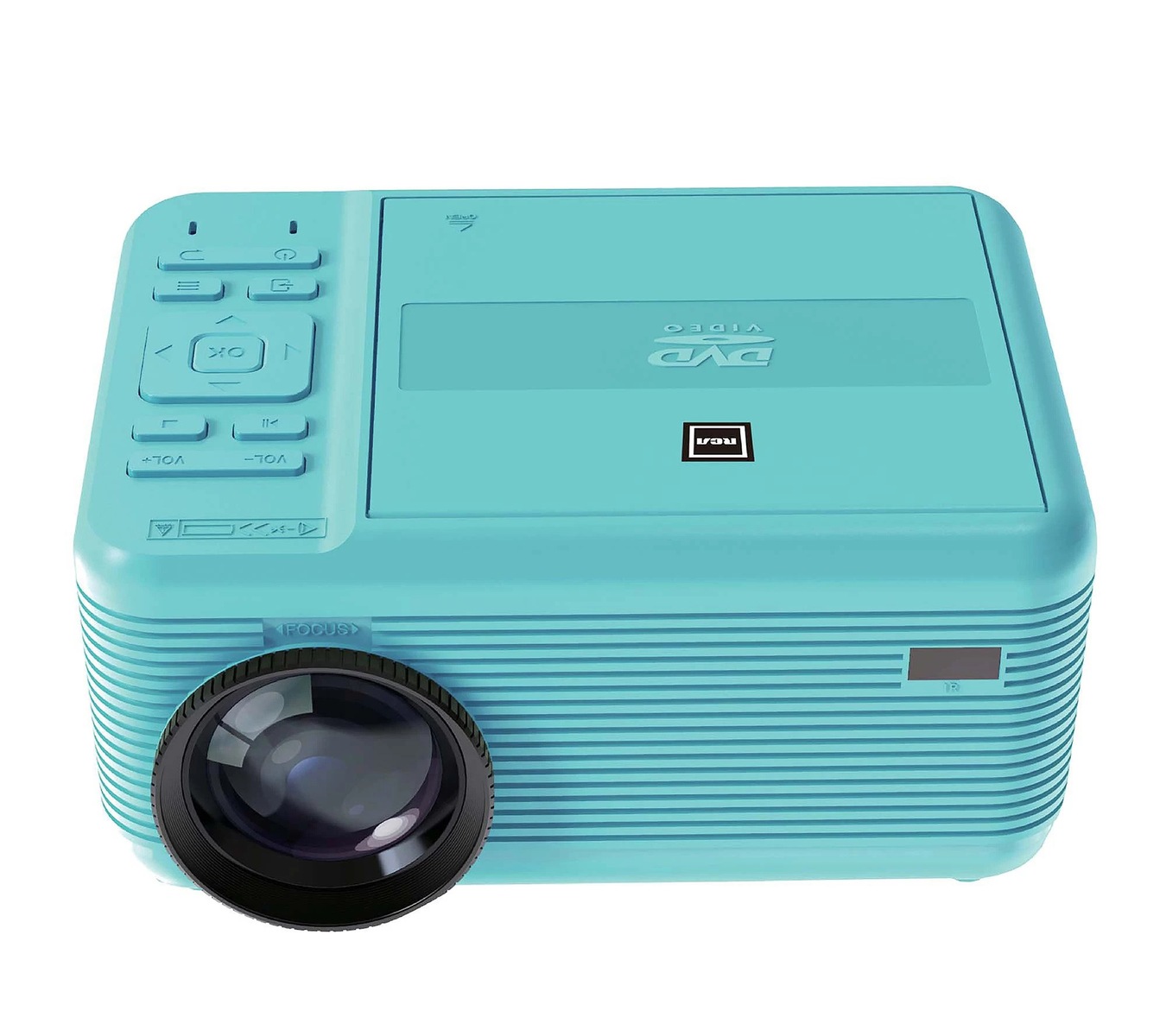Introduction
Whether you’re giving a presentation, enjoying a movie night, or sharing photos with friends and family, casting from your phone to a projector can take your multimedia experience to the next level. With the advancements in technology, it’s now easier than ever to connect your phone to a projector and enjoy your favorite content on the big screen.
In this article, we’ll explore different methods to connect your phone to a projector and cast your screen. We’ll cover options for both Android and iOS devices, highlighting popular casting devices such as Google Chromecast, Apple TV, and Lightning Digital AV Adapter.
Connecting your phone to a projector opens up a world of possibilities. You can showcase your work presentations with ease, stream movies and TV shows on a larger display, or even host a gaming night with friends. It’s a versatile solution that allows you to share your phone’s screen with a wider audience, without the need for complex setups or additional equipment.
Whether you’re a business professional, a student, or a tech-savvy individual, knowing how to cast from your phone to a projector can be a valuable skill. In the following sections, we’ll guide you through the steps you need to take, depending on your device and casting options available.
Connecting Your Phone to the Projector
Before you can cast from your phone to a projector, you need to establish a physical connection between the two devices. The method you choose will depend on the ports available on your phone and the projector.
The most common way to connect your phone to a projector is through an HDMI cable. Many projectors come equipped with an HDMI input, while most modern smartphones have either a USB-C or Lightning port. To establish a connection, you’ll need an HDMI adapter that matches your phone’s port. Once you’ve connected the cable, your phone’s screen should be mirrored on the projector automatically.
If your projector doesn’t have an HDMI input, you can explore other options such as VGA or USB connections. You may need additional adapters or cables to establish these connections. Check the projector’s manual or consult the manufacturer’s website for detailed instructions on how to connect your specific phone model.
In some cases, your projector and phone may support wireless connections. This eliminates the need for cables and offers a more convenient casting experience. Make sure both devices are connected to the same Wi-Fi network, and check if your projector supports Wi-Fi Direct or screen mirroring capabilities. On your phone, go to the settings menu and look for the screen mirroring or cast option. Once you’ve located it, select your projector from the list of available devices, and your screen will be mirrored wirelessly.
It’s worth noting that not all phones and projectors have compatible connection options. Before purchasing any cables or adapters, ensure that they are compatible with your devices to avoid any compatibility issues.
Now that you know how to physically connect your phone to the projector, let’s explore the different casting options available for various devices.
Casting Options for Different Devices
When it comes to casting from your phone to a projector, the method you choose will depend on the type of device you own. Let’s explore the casting options available for different devices:
- Google Chromecast: If you own an Android phone or an iPhone, Google Chromecast is a popular casting device. Simply plug the Chromecast into the HDMI port of your projector, download the Google Home app on your phone, and follow the instructions to set it up. Once connected, you can cast your phone’s screen, stream videos from apps like YouTube and Netflix, or cast media stored on your device.
- Apple TV: If you have an iPhone or iPad, Apple TV can be a great casting option. Connect your Apple TV device to the projector using an HDMI cable, and make sure it is connected to the same Wi-Fi network as your phone. On your iPhone or iPad, swipe down from the top-right corner of the screen to open the Control Center, tap the Screen Mirroring icon, and select your Apple TV device. Your device’s screen will be mirrored on the projector.
- Lightning Digital AV Adapter (iPhone): For iPhone users who prefer a wired connection, the Lightning Digital AV Adapter allows you to connect your phone directly to the projector using an HDMI cable. Plug the adapter into your iPhone’s Lightning port, connect the HDMI cable to the adapter and the projector, and your phone’s screen will be mirrored on the big screen.
- Android Phones: If you have an Android phone that supports MHL or SlimPort technology, you can connect it to the projector using an MHL or SlimPort adapter. These adapters convert the micro-USB or USB-C port on your phone into an HDMI port, allowing you to connect it directly to the projector. Once connected, your phone’s screen will be mirrored on the projector.
These are just a few of the casting options available for different devices. It’s important to check the compatibility of your phone and projector to ensure a smooth casting experience. Now, let’s dive into the specific steps for using Google Chromecast and Apple TV to cast from your phone to a projector.
Using Google Chromecast to Cast from Your Phone
Google Chromecast is a versatile casting device that allows you to easily cast your phone’s screen to a projector. Here’s how you can use Google Chromecast to cast from your phone:
- Plug the Chromecast into the HDMI port of your projector.
- Connect your Chromecast to the same Wi-Fi network as your phone.
- On your phone, download and install the Google Home app from the App Store (for iOS) or Google Play Store (for Android).
- Open the Google Home app and follow the on-screen instructions to set up your Chromecast. This involves associating the Chromecast with your Google account and naming your device.
- Once the setup is complete, open the app or media you want to cast from (such as YouTube or Netflix) on your phone.
- Look for the cast icon in the app or media player. It usually looks like a rectangle with Wi-Fi waves in the corner.
- Tap the cast icon and select your Chromecast device from the list of available devices.
- Your phone’s screen will be cast to the projector, displaying the content you selected.
It’s important to note that the steps may vary slightly depending on the app or media player you’re using. Some apps may have a dedicated cast button, while others may require you to access the casting options through the settings menu. If you experience any issues, refer to the help documentation provided by the app or visit the official Google Chromecast support website for troubleshooting tips.
With Google Chromecast, you can not only cast your phone’s screen but also take advantage of various streaming services and apps. Whether you want to watch videos, play games, or display presentations, Chromecast offers a seamless and convenient way to cast from your phone to a projector.
Now that you know how to use Google Chromecast, let’s explore how to cast from an iPhone using Apple TV.
Using Apple TV to Mirror Your Phone’s Screen
Apple TV is an excellent casting option for iPhone and iPad users, allowing you to easily mirror your phone’s screen on a projector. Here’s how you can use Apple TV to cast from your phone:
- Connect your Apple TV device to the projector using an HDMI cable.
- Make sure your Apple TV and phone are connected to the same Wi-Fi network.
- On your iPhone or iPad, swipe down from the top-right corner of the screen to open the Control Center.
- Tap the Screen Mirroring icon, which looks like a rectangle with a triangle at the bottom.
- A list of available devices will appear. Select your Apple TV device from the list.
- Enter the AirPlay verification code that appears on your TV screen, if prompted.
- Your phone’s screen will now be mirrored on the projector through Apple TV.
With Apple TV, you can not only mirror your phone’s screen but also enjoy a wide range of apps, games, and streaming services. You can watch videos, browse the internet, and even use apps designed specifically for Apple TV.
If you want to stop mirroring your phone’s screen, simply open the Control Center again, tap the Screen Mirroring icon, and select “Stop Mirroring” or “Disconnect” from the list of options.
It’s important to note that some apps or streaming services may have restrictions on mirroring due to DRM (Digital Rights Management) policies. In these cases, you may see a black screen or encounter an error message when attempting to mirror protected content. However, non-protected content should mirror without any issues.
If you encounter any difficulties or have any questions, refer to the Apple TV user manual or the official Apple support website for further assistance.
Now that you know how to use Apple TV to mirror your phone’s screen, let’s explore another option for iPhone users – screen mirroring using the Lightning Digital AV Adapter.
Screen Mirroring with a Lightning Digital AV Adapter (iPhone)
If you prefer a wired connection to cast from your iPhone to a projector, using a Lightning Digital AV Adapter is a great option. Here’s how you can mirror your phone’s screen using the Lightning Digital AV Adapter:
- Connect the Lightning Digital AV Adapter to your iPhone’s Lightning port.
- Connect one end of an HDMI cable to the adapter, and the other end to the HDMI port on your projector.
- Turn on your projector and select the HDMI input that matches the port you connected the cable to.
- Your iPhone’s screen should now be mirrored on the projector.
The Lightning Digital AV Adapter not only mirrors your phone’s screen but also supports audio transmission, allowing you to enjoy videos, music, and more with sound on the big screen.
It’s important to ensure that you’re using a genuine Lightning Digital AV Adapter from Apple or a reputable third-party adapter that is compatible with your iPhone model. Using counterfeit or incompatible adapters may result in connection issues or poor quality.
Additionally, be aware that some apps or streaming services may have limitations when it comes to mirroring protected content due to DRM (Digital Rights Management). As a result, you may encounter a black screen or receive an error message when attempting to mirror certain content. However, non-protected content should mirror smoothly and without any issues.
If you experience any difficulties with screen mirroring or have any questions, consult the user manual for your Lightning Digital AV Adapter or reach out to Apple support for further assistance.
Now that we’ve covered screen mirroring options for iPhone users, let’s explore how to cast from Android phones to a projector.
Casting from Android Phones to a Projector
Android phones offer various options for casting their screens to a projector, allowing you to enjoy your favorite content on a larger display. Here’s how you can cast from Android phones to a projector:
- Check if your Android phone supports MHL (Mobile High-Definition Link) or SlimPort technology. These technologies enable you to connect your phone to the projector through the micro-USB or USB-C port.
- Purchase an MHL or SlimPort adapter that is compatible with your Android phone model and projector.
- Connect the adapter to your phone’s micro-USB or USB-C port.
- Connect one end of an HDMI cable to the adapter and the other end to the HDMI port on your projector.
- Turn on your projector and select the HDMI input that corresponds to the port you connected the cable to.
- Your Android phone’s screen should now be mirrored on the projector, displaying the content from your phone.
It’s important to note that not all Android phones support MHL or SlimPort technology, so make sure to check your phone’s specifications or consult the manufacturer’s website to confirm compatibility. Additionally, you may need to enable certain settings or permissions on your Android phone to allow screen mirroring.
If your Android phone doesn’t support MHL or SlimPort, you can explore wireless casting options. One popular option is using Google Chromecast, as mentioned earlier in this article. Alternatively, check if your phone has built-in screen mirroring capabilities, often found in the settings menu under a name like “Screen Cast” or “Cast Screen.” Select your projector from the list of available devices, and your phone’s screen will be mirrored wirelessly.
If you encounter any difficulties or have specific questions regarding screen mirroring with your Android phone and projector, consult the user manual for your phone or contact the manufacturer’s support for further assistance.
Now that you know how to cast from Android phones to a projector, let’s explore some troubleshooting tips that can help resolve common issues while casting to a projector.
Troubleshooting Tips for Casting to a Projector
While casting from your phone to a projector is generally straightforward, you may encounter some issues along the way. Here are some troubleshooting tips to help you resolve common problems:
1. Check the connections: Ensure that all cables and adapters are securely connected to both your phone and the projector. Double-check that the projector is set to the correct input source.
2. Restart the devices: Sometimes, a simple restart can solve connectivity issues. Turn off your phone, projector, and any casting devices, then power them back on and attempt the connection again.
3. Confirm Wi-Fi connections: If you’re casting wirelessly, check that both your phone and the casting device are connected to the same Wi-Fi network. Inconsistent or weak Wi-Fi signals can cause interruptions, so make sure you have a stable connection.
4. Update software and apps: Ensure that your phone, casting device, and casting apps are up to date. Developers often release updates to address bugs and improve compatibility, so keeping your software current can help resolve any issues.
5. Adjust display settings: If your screen is not appearing correctly on the projector, check the display settings on your phone. Adjust the screen resolution, aspect ratio, or display mode to ensure compatibility with the projector’s capabilities.
6. Check for app restrictions: Some streaming apps or content providers block screen mirroring due to copyright or licensing restrictions. If you’re unable to cast specific content, try using a different app or consider using a dedicated casting device like Google Chromecast or Apple TV.
7. Test with another device: To identify whether the issue lies with your phone or the projector, try casting to the projector from another device. If the problem persists, it may be an issue with the projector or the connection. If it works fine with another device, the issue might be specific to your phone.
8. Reset or restore: As a last resort, you can try resetting your phone’s network settings or performing a factory reset. Note that this will erase all data on your phone, so make sure to back up your important files before proceeding.
If none of these troubleshooting tips resolve the issue, it’s recommended to consult the user manuals for your phone, projector, and casting devices, or contact their respective support teams for further assistance. They will have the expertise to address device-specific problems and guide you through the troubleshooting process.
Now that we’ve covered some troubleshooting tips, let’s summarize the key points we’ve discussed in this article.
Conclusion
Connecting your phone to a projector and casting your screen opens up a world of possibilities for sharing and enjoying media content. Whether you’re giving presentations, watching movies, or playing games, the ability to project your phone’s screen onto a larger display enhances the overall experience.
In this article, we explored various methods to connect your phone to a projector, including using HDMI cables, wireless options like Google Chromecast, and casting devices like Apple TV. We discussed the steps involved in setting up and using these devices, offering detailed instructions for each method.
For Android users, we highlighted the importance of checking if your phone supports MHL or SlimPort technology for a wired connection, as well as exploring wireless casting options. iPhone users were provided with instructions for using the Lightning Digital AV Adapter and Apple TV to mirror their phone’s screen.
We also provided troubleshooting tips to help you address common issues that may arise during the casting process. Checking connections, restarting devices, updating software, adjusting display settings, and testing with another device are some of the steps you can take to troubleshoot and resolve problems.
Remember, compatibility between your phone and the projector is crucial, so always ensure that you’re using the appropriate cables, adapters, and casting devices that are compatible with your specific devices.
Casting from your phone to a projector not only allows you to share your content with a larger audience but also enhances your own multimedia experience. So, whether you’re conducting meetings, organizing movie nights, or sharing memories with loved ones, the ability to cast from your phone to a projector offers convenience, versatility, and an immersive visual experience.
With the knowledge and insights gained from this article, you can confidently connect your phone to a projector and enjoy the benefits of casting your screen anytime, anywhere.







